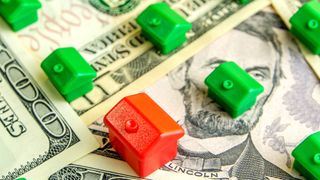In a statement (opens in new tab) to lenders, Freddie Mac said the decision had been taken as a result of “risk management and loss forecasting precipitated by COVID-19 related economic and market uncertainty.” However, both the mortgage industry and consumer advocates have been swift to criticize the move which will penalize homeowners looking to make cost savings wherever they can amid the pandemic. “Mortgage lenders don’t like surprises, and they don’t like suddenly being forced to pay hundreds of millions of dollars they hadn’t budgeted for,” said (opens in new tab) Matthew Graham, Chief Operating Officer at Mortgage News Daily. “When that happens, they are going to raise rates to offset the newfound losses. And that’s exactly what they did.”
How much will this cost mortgage borrowers?
While 0.5% may sound insignificant, the move actually means that the cost of fees attached to mortgage refinancing are more than doubling - potentially adding around $1,500 to the cost of a $300,000 loan. In another blow, however, borrowers now also face the prospect of paying higher mortgage rates on top of the new half point fee, with mortgage lenders already raising rates to soften the blow to their bottom lines. Amid the turmoil of the coronavirus pandemic and the resultant economic disruption, record low mortgage rates have been one of very few positives to emerge, offering the potential for homeowners to save hundreds of dollars a month (opens in new tab) on their payments. Since the fee announcement, however, mortgage rates have surged higher, with the latest data (opens in new tab) showing the average 30-year rate had increased from an all-time low of 2.81% just a week ago to 3.14% by Friday, August 15. Matthew Graham says most borrowers are seeing a $40 a month difference in payments on a $300,000 loan right now, but believes the final impact could end up much bigger. “Don’t let anyone tell you this isn’t a big deal or that it doesn’t matter or that it’s a drop in the bucket in the bigger picture,” he warns. “All of that could be true to someone on the outside looking in. But if you had a loan in process that wasn’t locked or if you are in a position to save money by refinancing and just haven’t gotten around to it yet, the government just vacuumed $3,000 out of your purse/wallet.”
What should mortgage borrowers do?
The obvious fear now is that those homeowners who have yet to refinance their mortgage have missed the boat on the lowest mortgage rates. While that may be true, it is important to put everything into context, with the rates from the best mortgage lenders (opens in new tab) still extremely attractive in the grand scheme of things. At United Wholesale Mortgage, for instance, rates as low as 1.999% are still being offered on a 30-year loan. The key is knowing how to find such mortgage deals, and that’s where the services of a comparison site can prove invaluable. Simply by filling in one form, an online marketplace such as LendingTree (opens in new tab) can provide access to a number of mortgage lenders all at the same time. It’s then just a case of waiting for the various mortgage quotes to arrive, and choosing the deal most suited to you. In preparation to apply for a new mortgage, it is also best to have certain things in order to avoid unnecessary delay, and the potential for another curve ball, such as that which has been delivered by the new fees, to appear. So find your old mortgage paperwork and prepare the evidence that you’ll need in respect of your income, outgoings, debts, and so on. And with even the best refinance mortgage companies displaying more caution over who they lend to due to the uncertainty caused by the pandemic, also take the time to check your credit score, and consider approaching the best credit repair services (opens in new tab) if you think your creditworthiness would benefit from a little extra attention.
